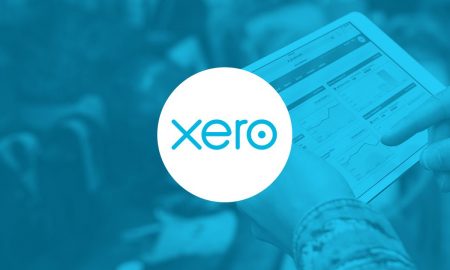
Here’s How to Make the Business of Cloud Kitchen Really Successful!

 Cloud Kitchens, ghost kitchens, dark kitchens, virtual restaurants, and delivery-only restaurants are growing popular. According to an intricated report by a Restaurant Industry & Market Evolution, 52% of foodservice operators plan to set up a Cloud Kitchen or a delivery-only outlet for their brand.
Cloud Kitchens, ghost kitchens, dark kitchens, virtual restaurants, and delivery-only restaurants are growing popular. According to an intricated report by a Restaurant Industry & Market Evolution, 52% of foodservice operators plan to set up a Cloud Kitchen or a delivery-only outlet for their brand.
With restaurant delivery sales increasing over the years, the delivery-only model has helped with the economies of scale. If you are trying to make cloud kitchen work, here is exactly how to go about things.
Central Management of Orders
The cloud kitchen business is dependent on receiving orders from customers via online channels. This includes websites, apps, call center panels, third-party food aggregators, and social media. Cloud kitchens may often face a problem when managing orders manually.
Since your cloud kitchen is usually listed on the platforms, entering the order details into the POS is a big task. Manual processes may lead to delays when running several brands from a single kitchen.
You can try out several things to implement various strategies and amp up the sales volume. So, invest in a centralized ordering system that can keep a steady track of orders from multiple sources and channels. You can use this to maintain and keep a tab on the number of orders on the platform. This also helps find out which platform works best for your cloud kitchen brand.
Make The Whole Operation Cloud-Ready

Live up to the industry name by focusing on several things such as SOPs, inventory, employee training, procurement, recipes, tech & allergen sheets. All of which is cloud-based.
Now, when you’re trying to switch locations or expand your operation, your initial time investment will reduce by half. And that is because everybody on board can have established and streamlined procedures.
Maximize the Output
Most delivery volumes implement efficient processes and help report the workflows to maximize the output. The moment you receive an order, start the preparation and packaging, ensure that you take optimum time to fulfill each order. Adhere to defined Standard Operating Procedures may require the proper management and accuracy. You may need to invest in automated tools that streamline the operations and ensure faster delivery.
Third-party food aggregators help bring about maximum outreach and visibility for the cloud kitchen operators. Ensure that you list your restaurant on some important aggregator platforms more. You can build your restaurant’s online ordering system via either a website or mobile app to get the maximum output for your orders. You can invest in proper cloud kitchen systems to integrate various ordering channels into a single platform. It can help the management and kitchen staff to help process the orders.
Include Proper Staffing Practices
Even though running a cloud kitchen may not require many staff members, you must still need to dig into proper staffing practices that will help in handling a large number of food production volumes at any given level. You can create a proper staffing plan and adjust your staff’s schedule according to sales trends. You can also allot job roles to specific staff members if you are short on in-house delivery staff.
Similarly, when you have more than the usual volume increases, you can include more staff in the kitchen to help prepare the orders and packaging of the food. You can consider what each employee brings to the table, conduct proper training sessions, and offer the right assistance, guidance, and support to help the staff.
Focus on Delivering Food on Time
 Since you are a cloud kitchen, you are a delivery-only restaurant, so you need to focus on the preparation and delivery times. Delayed or inaccurate deliveries may put off your customers. Mostly, cloud kitchen businesses do not have the opportunity of interacting with customers directly, orders need to be delivered with accuracy, and delivery operations need to be organized properly.
Since you are a cloud kitchen, you are a delivery-only restaurant, so you need to focus on the preparation and delivery times. Delayed or inaccurate deliveries may put off your customers. Mostly, cloud kitchen businesses do not have the opportunity of interacting with customers directly, orders need to be delivered with accuracy, and delivery operations need to be organized properly.
Invest in a cloud kitchen software that helps manage the orders from multiple platforms. Besides that, the software will also help you integrate it with third-party services, KDS, etc., and support several functions.
For instance, you could use the software along with your CRM, inventory management, reporting, centralized recipe management, and more. In short, you would be running your dream business most seamlessly with some technological assistance. So, are you ready to explore the world of cloud kitchen? Let us know in the comments section!
More in Business & Investments
-
`
WWE SmackDown to Make a Comeback on USA Network in 2024
In a surprising twist, WWE’s Friday night staple, “SmackDown,” is bidding farewell to Fox and heading back to its old stomping...
November 24, 2023 -
`
Why Women Face Higher Out-of-Pocket Health Expenses
In healthcare, disparities persist, and a recent report from Deloitte underscores a significant financial gap between working women and men in...
November 18, 2023 -
`
Elon Musk vs Bill Gates: The Clash of Titans
In the realm of the world’s wealthiest individuals, a simmering rivalry has been captivating public attention. It’s not a clash of...
November 7, 2023 -
`
The Power Of Disconnecting
In our digitally driven age, where smartphones, tablets, and laptops have become extensions of ourselves, disconnecting might seem daunting. However, the...
October 31, 2023 -
`
JCPenney’s Bankruptcy: The End of an Era
JCPenney filed for bankruptcy in a move echoing the struggles of many retailers in the wake of the COVID-19 pandemic. This...
October 26, 2023 -
`
Reasons Why You Need a Financial Plan
Financial planning is not just for the wealthy or those nearing retirement. It’s a crucial tool for anyone seeking financial security...
October 19, 2023 -
`
How Brad Pitt Spends His Millions All Over the World
Brad Pitt, the charismatic Hollywood superstar, has left an indelible mark on the silver screen and made an impact in the...
October 10, 2023 -
`
Gen Z’s Posh Palate: The Unexpected Rise of Caviar Culture
Amid the backdrop of a digital era buzzing with viral dances, e-sports, and niche memes, there emerges a peculiar plot twist:...
October 7, 2023 -
`
Transform Your Retail Business With Social Media Mastery
If you’re a retail marketer posting your social media messages haphazardly, you might be missing out on prime opportunities to turn...
September 26, 2023















You must be logged in to post a comment Login